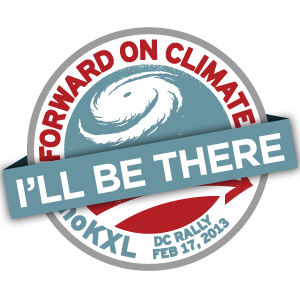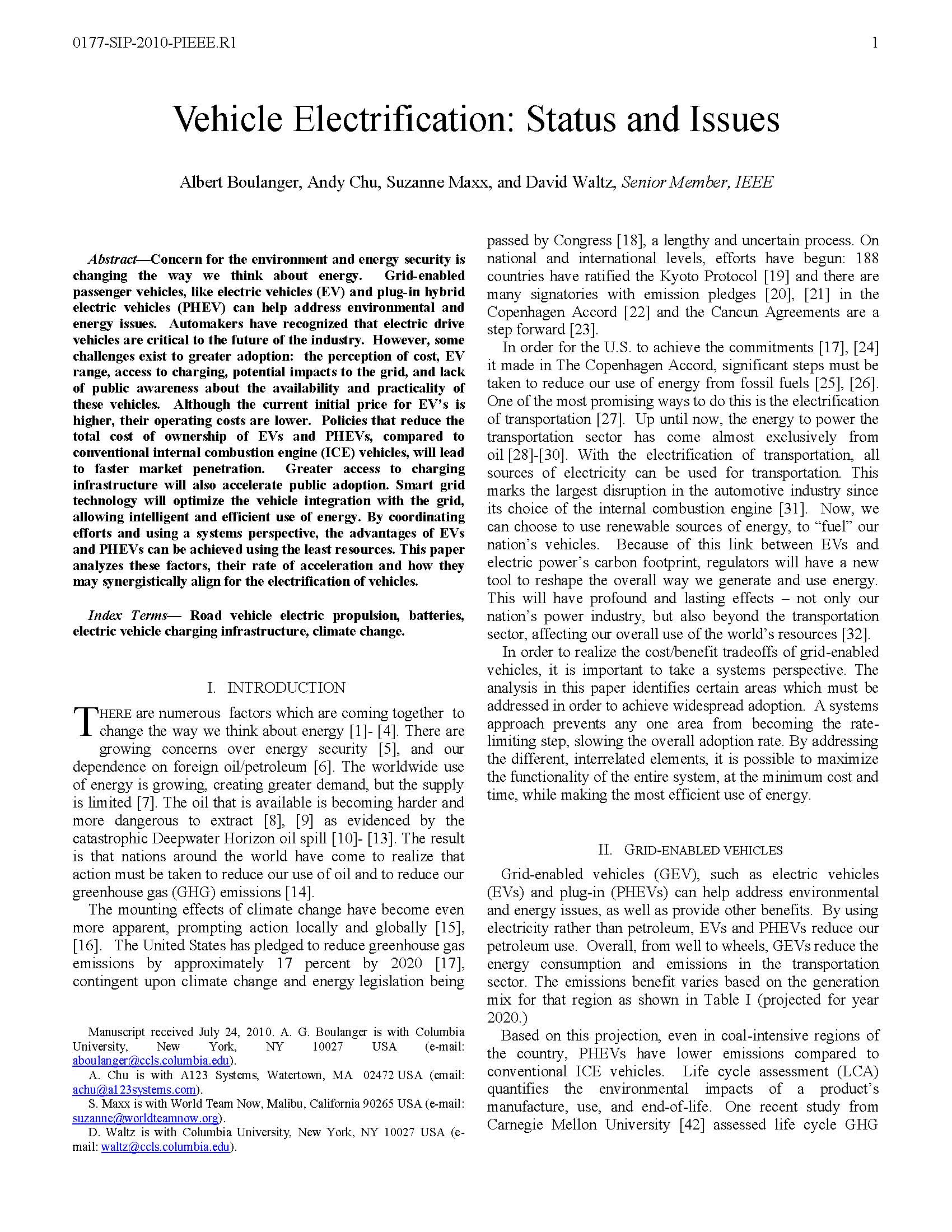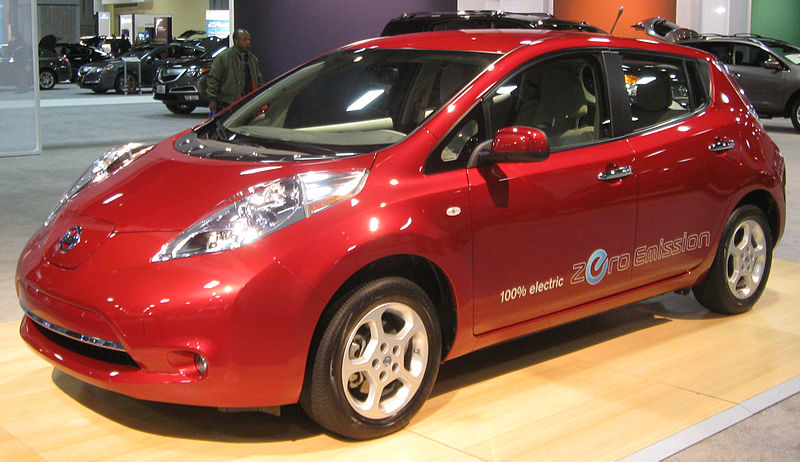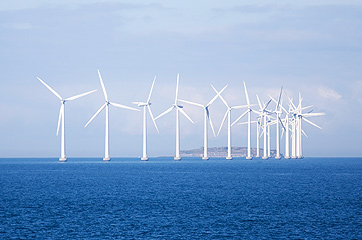By Suzanne Maxx and Albert Boulanger

The 2012 LA Auto Show
The 2012 LA Auto Show’s new vehicles and the new Tesla all drive home the point that a car is more than a mode of transportation at this time in the history of the automobile. It is evident that innovation counts, as well as efficiency. One’s choice of vehicle (see our auto show album) requires not just a commitment to invest in a brand, but also requires consideration into the way a vehicle is powered (conventional or alternative fuel). Now the actual intelligence of the vehicle itself, how it “calls home” and can network with you and other cars, with a variety of ways to customize it— all factors into the mix. There are 1,000 plus vehicles to navigate at the show, so Auto Shows by Cars.com mobile app (iPhone, Android) becomes a necessity. Click here to see our LA Auto Show Album with the Tesla Model S included.
“Eco” is clearly a priority this year; both “eco”nomy and “eco”ology are obviously considerations— “Green,” comes in a variety of shades, from most original equipment manufacturers (OEMs), like never before at this year’s first major North America show of the season. Over three dozen alternative vehicles enforce this year’s trend. Most importantly now there is the consideration of not just what kind of energy your vehicle uses, but also, where does your vehicle’s energy source come from, is it renewable? Is the choice sustainable for your lifestyle and our future? Here is a big-picture look but highly technical article dealing with the topic
It is not just the plethora of new vehicles powered by a variety of options that range from the choice of electric vehicles (EVs) to plug-in hybrid electric vehicles (PHEVs) and hybrids (which have seen a recent sales increase of 63.5 percent in the USA). It is the sudden availability of these vehicles in a variety of brands and models, which is the most significant change. EV and PHEV leaders like Nissan with their all-electric Leaf and Toyota with the RAV4 EV and Prius now share the space with Audi, BMW, Chevrolet, Coda, Fiat, Fisker, Mitsubishi, and Smart. More than 50 models of vehicles are making their World Debut, North America Debut or LA Auto Show Debut (click here to see all 3 categories of debuts) but these alternative entries: Fiat 500e, Ford’s batch of new variations with the C Max plus the Fusion, and Honda’s plug-in Accord, prove this is more than a growing trend.
The OEMs’ and public’s awakening to realize that alternative vehicles can help achieve the goal of using our resources in a more sustainable way is a significant change. Policy in the USA helped drive this change to alternative vehicles with, for example, the Nissan Leaf qualifying for a total of $10,000 in both state and federal rebates, in CA, click here to see your states’ laws and incentives including rebates in some states. These rebates, plus the time savings from EV and PHEVs that now qualify (in CA) for the stickers that gain access to carpools lanes, are an immeasurable advantage too. These changes prioritize stewardship of our planet— for future generations and make it possible for the public to affect our climate and future.
Even the OEMs that rely on the straight traditional internal combustion engines (ICE) which had difficulty making a change in the past are now motivated to be efficiently innovative by the USA’s new fuel efficiency standards. Take Ford/Lincoln, for example, with a batch of new vehicles suddenly flooding the market— aiding the change of direction to achieve independence from foreign fossil fuel that threatens both national security and economics. We now finally see the internal combustion engine vehicles with alternative fuels trying to compete with the life cycle factoring cost of EVs, PHEVs, and Hybrids. There are a variety of modes of this transformation inspired by new fuel standards in the USA to use everything from hybrid vehicles, EVs with range extenders (Volt and Fisker), to fuel-efficient EcoBoost ICE (Fords), plus many models that integrated a lighter weight design, like Land Rover’s Ranger Rover with a 39% improvement in weight, as their game-changer. There are also the “clean”-diesel vehicles, hydrogen fuel cell vehicles, and more.
The Test Drive at the LA Auto Show is a “must”, to test out these vehicles, and if you haven’t made it there yet, you have until December 9th. There are alternative vehicles from OEMs available to be driven. However to drive this year’s Motor Trend Car of the Year, the Tesla Model S, a refundable deposit of $5,000 is needed, plus coordination with the store to schedule the test drive. The LA Auto Show has it all, except the Tesla. The test drive and the visit to the new Topanga Tesla store the day before the LA Auto Show’s “Media Days” helped to round out our perspective of the new leading vehicles.

Tesla at the Topanga Showroom
Tesla’s Model S is a vehicle that is an EV game-changer if in the long run the company can produce and deliver the vehicles within a reasonable rate of both time and cost, but with Elon Musk’s entrepreneurial skill all is possible and Tesla’s success seems to become evident. The economics and affordability will naturally evolve as will Tesla’s production capabilities, especially after partnering with Toyota. Since the vehicles are so customizable with just about every aspect from color to the interior to the battery being a choice, it may take time to get ahead of the vehicle demand. It deservedly won Motor Trend Car of the Year Award with its EV battery’s choice of range with up to 300 miles on a charge. Their free solar charging infrastructure being developed and strategically placed to go the distance with DC fast chargers helps inspire early adoption too. But the actual vehicle itself is outside the EV box with 0 to 70 in 3.8 seconds and the handling is arguably incomparable to others including high-end internal combustion engine vehicles. The Tesla’s custom design options, with a variety of choices, support individuals needs. All aspects of the design including the batteries well-integrative placement give Tesla a first mover’s advantage. Smart to have an autonomous marketing strategy that leaves out the traditional approaches as this vehicle is redefining the “box” in all ways, including the marketing. Tesla stores give the public the opportunity to view, and their vehicle sales are done on-line. This cuts out the middle man aspect of dealerships. Ideally, close communication with an OEM may better support the owner’s interests, but this marketing model is a threat to many in the automotive industry as it pushes the boundaries to look closer at the law. (Tesla won the first round of challenge in MA.) It’s no wonder internal combustion engine OEM’s may find it hard to complete, but time will answer this inquiry.
Tesla has both the advantage and disadvantage of being new to the game of manufacturing but may end up changing the game. An OEM’s history is becoming more significant though these times, however. We have to applaud a company like Nissan that was able to preserve through significant events like Fukushima. An OEM’s brand is much like our own personalities— varied, different, and mechanical history and how each come faces challenges counts. One key element is the marketing strategy for public adoption. Most of the OEM’s new vehicles are described well in this press release on the LA Car Show media-only green advanced technology ride and drive event. As the plurality of life exist for our differences, so too will drivers have varied vehicle preferences.

Nissan Shift_ Campaign at the LA Auto Show
Nissan indeed has led the EV “SHIFT”. The launch of Nissan’s Leaf in 2010 gave it the advantage of the first mover, is the leading innovator of the EV with the Leaf as the top-selling EV in the world. The Nissan Leaf is not only affordable and a fun, clean drive— it is a great car. Take it from me and others who have driven the Leaf over time, and love the vehicle, or check out their impeccable engineering and innovative design with a safety record nothing short of amazing. There have been absolutely no recalls ever in any years of the manufacturing Nissan’s Leaf. The Leaf gets media instead for prestigious awards, like the World Car of the Year.

2012 Leaf Charging
The only challenge with the 2012 Leaf is the battery’s range, which is improved in the 2013 model. This range issue is not really a problem for the average person who drives less than 100 miles a day. If Nissan were to swap out their batteries overtime for longer range batteries as they are developed, there would be no stopping the widespread success of the Leaf.

Nissan’s High Cross Concept Auto
At the LA Auto, the buzz was around Nissan’s High Cross Concept (photos courtesy of Nissan here) which may fill the niche of integrating a hybrid model for either one of their famous lines like the Pathfinder— perhaps lighter weight— with an impeccable design. Nissan doesn’t have to reinvent the wheel with new models as their old ones, like the Pathfinder, transcend time and who knows this may even be where the cross over technology comes to market as a PHEV. This brand’s concept vehicles often come into form, as this company is a grounded pacesetter, so it is exciting to see the battery life being tackled for a longer range of sustainable EV driving. I still have memories of being Monaco in the early ’90s where I interviewed key designers and asked about their plans of an EV. At that time, they said in Japanese that it would be at least a decade away, but they were working on it then. Obviously, Nissan took it’s time to make sure the safety issues and the many problems that occur with a new car were addressed prior to the game-changing launch of their EV.

In the foreground is the Ford C Max Hybrid along with Suzanne Maxx
Ford/Lincoln: We have to applaud the ambitious efforts of Ford with their intent to blitz the market with eight new vehicles offering more than 40pmg, by the end of the year— plus their bold efforts to give the customer the choice of the kind of energy to use to power their vehicle. The choices go beyond choosing between a hybrid version an EV or and PHEV, to various engine size and EcoBoost /Duratec internal combustion engine choices. I’m driving the C Max right now and am impressed by its handling, mileage, and design. The Ford’s C Max was nominated for the Green Car of the Year, but unfortunately, the judges were still most impressed with the Fusion’s five versions were both its wining attribute branded by the choice of engine‘s power, and yet that became a potential weakness. David Mondragon Ford’s general marketing manager explained like this, “From EcoBoost to hybrid and plug-in hybrid offerings, the new Fusion is delivering the best-in-class fuel economy wrapped in one dynamic package”. The Ford Fusion won Green Car Journal’s Car of the Year 2013 at the LA Auto Show. This week Ford has issued a recall of the Fusions with the 1.6 liter EcoBoost engine, as well as the Escape. Perhaps this was due in part to the diversion of focus on so many power plant choices, but surely they will persist. The Fusion’s unique use of steel helps ensure safety as it is the first vehicle to use this steel technology. The C Max series seems to have legs in the hybrid, PHEV and its all-electric C Max Energi EV— perhaps this is the winning line.
Toyota: The Rav4 EV was the first crossover “Recreational Active Vehicle” with 4-wheel drive in the USA. Actor Ed Begley is a good example of one the many owners of the original millennium-vintage Rav4 who have had their vehicles almost maintenance free (windshield wipers and tires still count) for more than a decade, and still rave about the vehicle. Now the new RAV4 EV, a groundbreaking electric vehicle at 76 MPGe that is the result of a collaboration with Tesla Motors, the Prius Plug-in, a next-generation hybrid that allows all-electric driving at speeds up to 60 mph and advanced safety technology including a Pre-Collision System; and the FCHV-adv, a fuel cell hybrid concept vehicle demonstrating breakthrough hydrogen cell technology that can take a vehicle over 500 miles on a single fill-up, but the challenge with hydrogen fuel cell remains the large amount of energy it takes to make the fuel cell.

The sexiest looking EV was the Fisker Karma at 2012 LA Auto Show
Fisker’s advantage is it is the sexiest looking EV with a range extender on the market, replete with a solar roof and every part chosen with kid gloves. It is a vehicle available now selling to a sports luxury market. It is the first luxury EV, featuring an electric motor delivering 959 ft. lbs. of torque paired with a range-extending four-cylinder engine/generator. The surprising advantage of the Fisker is that the range extender on board generator has enough capacity to be able to help power your home if there is an electrical outage and potentially sustain an energy source with either the fuel or electric component. The Fisker Karma was listed among the “Green Design 100” of 2009 by Time magazine. Also, Time listed the Karma among the “The 50 Best Inventions” of 2011. In November 2011 the Fisker Karma won Automobile Magazine’s 2012 Design of the Year Award. In December 2011, Karma was chosen as “Luxury Car of The Year” by Top Gear Magazine, and “Car of The Year”

Suzanne Maxx at the Chevy Volt display
Chevy Volt is the affordable version of a Fisker with the same advantages except for the high-end angle— this is a move to be a competitor of the plug-in Prius, and fortunately in 2013 they changed their start button’s design will no longer pose a risk to be put in service mode while driving and also elimination of the redundant front console buttons. The Chevy Spark EV is powered by a nanophosphate lithium-ion battery pack and an 85kW electric motor. This will be GM’s first EV since their controversial leading EV1 was recalled.

Lincoln MKZ Hybrid
Porshe’s PHEV & Lincoln’s MKZ Hybrid kings of the sports & premium luxury traditional OEMs go Hybrid and PHEV respectively by this year’s end.

BMWi8 Spyder concept car
BMWi8 Spyder (photo here) (a concept car making its North America debut) planned for 2015 is a topless plug-in hybrid with a three-cylinder turbo diesel engine with fuel economy expected to be around 70mpg.
Some vehicles seem to just be for the fun, like BMW’s X1 compact cross over that partnered with K-2 for the Powder Ride—this SUV is only available in winter months, this deal includes new skis, a ski luggage box, and the snowboard design on the vehicle.
What is also in consideration of the big picture are resources used not just in each vehicle itself, but also the choice of the way each vehicle integrates and combines onsite power sources, and where/how the energy the vehicle uses is actually sourced.
EVs, PHEVs, and Hybrids truly are only are clean as the way their energy is sourced and stored and (all the way through their life cycle— cradle to cradle) from a whole systems perspective of usage— that depends on the car being grid-tied, or independent. Generally, electricity bought through the electrical grid from a utility is subject to a carbon footprint game of roulette— depending on one’s location in the USA, you or the utility’s choices of purchasing power. It would be most ideal if a large portion of the USA got their energy from solar power, but unfortunately, energy generation is often still sourced by coal— it is truly a case-by-case situation depending on the region. Click here to determine how clean your EV is now based on your state’s generation mix. Ideally, each owner of an EV or PHEV would generate their own onsite power from a renewable energy source, on or nearby one’s home, office or any location in route, or by a destination. As a reference, in the article Vehicle Electrification: Status and Issues, the V2G model (refer to the article’s Fig 7) of vehicle to grid can make your EV more than just a battery, needing a power source to charge. With the smart grid and various applications, one would have the choice to arbitrage energy by buying energy at off-peak demand and selling energy from one’s battery to be put back into the grid at peak demand.
Besides the Power Purchase Agreements (PPAs) for communities, in California, there is also the Community Choice Aggregation (CCA) — that gives power to the people by allowing communities and other entities to unite and choose the source of their energy production. The CCA can supply their own energy from renewable sources, and set their own pay rates for the public.
EV chargers sourced from wind energy are starting to take hold in the USA after years of success in countries such as Denmark where the country spent 100 million on EV infrastructure including charge points and battery swap stations supplied by wind power. The first wind EV charger installation in the USA was in Chicago, in 2010. But the partnerships with OEMs for wind installations has yet to take force, unlike the solar partnerships.

Solar Carports and EVs synergize
Teaming up is more than the way to achieve energy efficiency, as it allows for the magic of synergy, evidenced by OEM’s that are team up with solar manufacturers. Both Nissan and Ford have teamed up with solar giant SunPower. Nissan’s program is geared to public education with how a Sun Power residential system can reduce CO2 while controlling the cost of driving the Leaf with an on-line video tutorial and free home assessment. Ford’s “Drive Green for Life” program offers high efficiency 2.5 kW solar roof systems to owners of the Focus EV, but also works for the C-Max Energi and Fusion Energi PHEV.
Tesla Motors is putting in a Fast Charging system with Solar City’s-built carports in strategic location across the country. It is said just a half-hour at one of these chargers will provide 3 hours of driving at 60 mph.
BMW and Real Goods offer ActiveE owners that live in the states of CA, NJ, NY, MA, and CT with the option to charge their EVs at home with a solar system discounted at 35% and this includes a turnkey system from design to install.
Chevy is creating “Green Zones” for Volt and other emergent EVs like the Spark, at dealerships where up to twelve vehicles will be able to charge from Sunlogics’ panels, the surplus energy will be used for the dealership.
Then there are Solar providers working to help the public adoption of renewable energy with demonstration projects. Solar-panel manufacturer SolarWorld partnered with CALSTART to supply a solar carport paired with EV charging stations at its U.S. headquarters. CALSTART is a member of the Plug-in Electric Vehicle Collaborative, a group of auto manufacturers, suppliers and government agencies working to facilitate deployment of electric vehicle charging stations in the U.S.
Green is the color nature paints with, and it represents natural growth, it also happens to be the color of USA’s currency. 2012 saw more green car choices, as we saw at the 2012 LA Auto Show, 2013 promises to usher in a new wave of cars but now with more teaming-up to supply the missing links in the energy delivery chain to truly begin to earn the moniker Green and earnestly reduce the carbon footprint for transportation. The LA Auto Show and the automobile industry are seeing remarkable changes and growth with different priorities- a reflection of what is true for our country and our planet at this time.






















